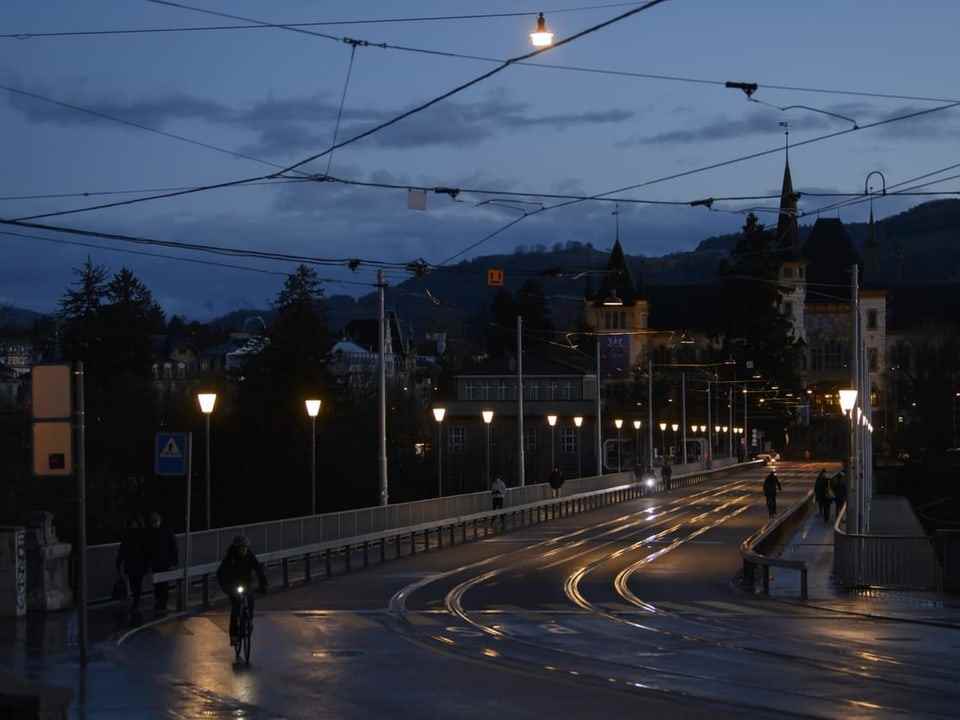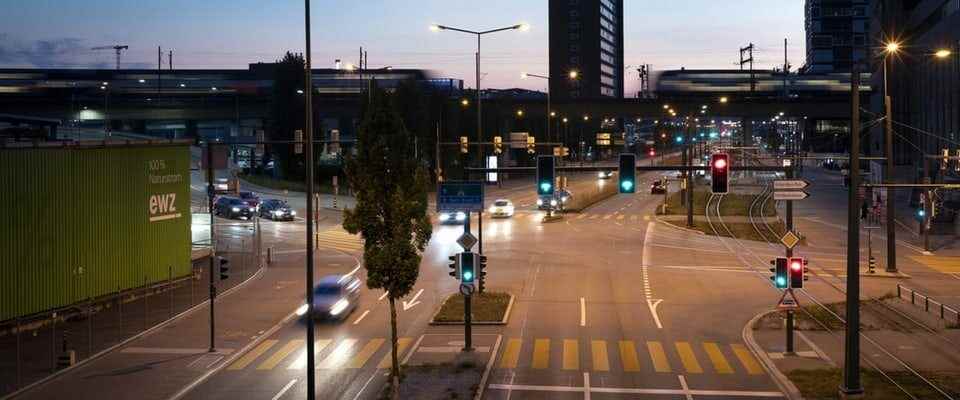contents
Many cities want to reduce lighting to save electricity. Bern shows how roads can still remain safe.
Even the Federal Palace remains dark. Across the country, cities and communities are trying to save electricity by not lighting buildings or even by turning off street lights. Or at least reduce it.
Legend:
In Zurich, the street lamps continue to shine.
Keystone/Gaetan Bally
This causes a lot of discussion: in Zurich, concerns were raised that dark alleys could be particularly dangerous for women.
The Zurich city government then made a U-turn: Contrary to an earlier announcement, the city will not turn off the street lights at night. This measure will not be pursued for “reasons of safety and technical feasibility,” it said.
One can save electricity and at the same time meet the safety requirements.
How much light does public space need? The Bernese authorities are also concerned with this question. The city presented and introduced a new lighting concept there at the beginning of February, i.e. before the current energy crisis. It is not necessary to switch off the lighting for entire streets or alleys.

Legend:
Bern has equipped historic lights on the Kirchenfeld Bridge with energy-saving LED technology.
Keystone/Anthony Anex
“You can save electricity and at the same time meet the safety requirements,” says Eva Krähenbühl from the Environmental Protection Agency. However, this is only possible if suitable LED street lamps are used. These use up to 90 percent less electricity than conventional lights.
According to Krähenbühl, public lighting is already dimmed to 50 percent during the night in many places. Nevertheless, the street lighting standard is maintained.
“The dimming phases can be extended as a power-saving measure if necessary,” says Krähenbühl, who spent five years fine-tuning the new lighting concept. For example, the times in which streets and squares are not illuminated at full power could be extended.
“Full moon atmosphere” instead of headlights
Will the new lighting technology make it darker in the city of Bern? Krähenbühl says that there is not simply a “light” and “dark”. The basic lighting will remain the same in the future, but it will be less strong, less glaring and therefore less “energy-guzzling”.
It is illuminated more specifically and with less light output. “This creates a full moon atmosphere.”
